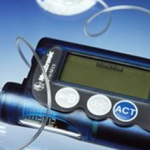Diabetic Foot Care
Diabetic Foot Care Facts
Given that the most dangerous symptoms of diabetes affect internal organs such as the heart, kidneys and pancreas, it may be surprising to hear that one of the major body parts that can also be affected is the feet. However, this is very much the case. This has a lot to do with the negative effect that diabetes can have on the circulatory system, combined with the fact that the feet are further away from the heart than any other appendage. This can lead to dire consequences for diabetics due to some of the risks that they can be exposed to by improper foot care.
Risks
The distance of the feet from the heart in combination with the restricted circulatory functions sometimes seen in diabetics can lead to numbness in the extremities. The danger here is not necessarily in the restricted blood flow itself, but in the fact that the resultant numbness can cause diabetics to remain unaware of potential damage done to the feet. This means that mild splinters, tiny cuts, and other normally minor wounds or injuries can go unattended for much longer than usual. This raises the risk of infection.
In most non-diabetics, the body would be able to handle some minor infections on its own. This is where the second dangerous side effect of restricted blood flow to the feet comes in. The body’s healing capabilities are weakened, and generally inconsequential infections may fester to the point that the foot can be lost entirely.
Prevention
With the possibility of amputation at stake, maintaining proper foot care is a prime concern. Diabetics who experience numbness of the feet must be vigilant in watching out for splinters, scrapes, cuts, blisters, or any other surface abnormalities. It is good to do routine inspections, preferably right after the feet have been cleaned. They should be washed with care so as not to irritate any existing scrapes or cause new ones. Once bathing and inspection have been taken care of, it might be helpful to use moisturizing lotions and anti-fungal creams to ensure that foot health is at its maximum.Aside from basic hygienic maintenance, it is also important to observe basic pedicure procedures. For instance, trimming the toenails is a process that requires more care than some might imagine. Ingrown toenails can be a major source of infection, requiring surgery if they get too out of hand. Calluses are also in need of maintenance, but given the potential breadth of their surface area over the bottom of the foot, it might be best to leave this aspect of foot care to experienced professionals such as pedicurists or even podiatrists.
Finally, diabetics should use proper footwear to lower the degree of required foot maintenance altogether. When the feet are left bare while walking around the house, or even when lying in bed, they can be exposed to splinters and particulates that might add to the risk of infection. By wearing socks at all times, and shoes whenever possible, this risk can be cut down. The one caution to heed in this respect is that socks or shoes which are too tight can further restrict circulatory function, making the risks of numbness and infection even greater.
























